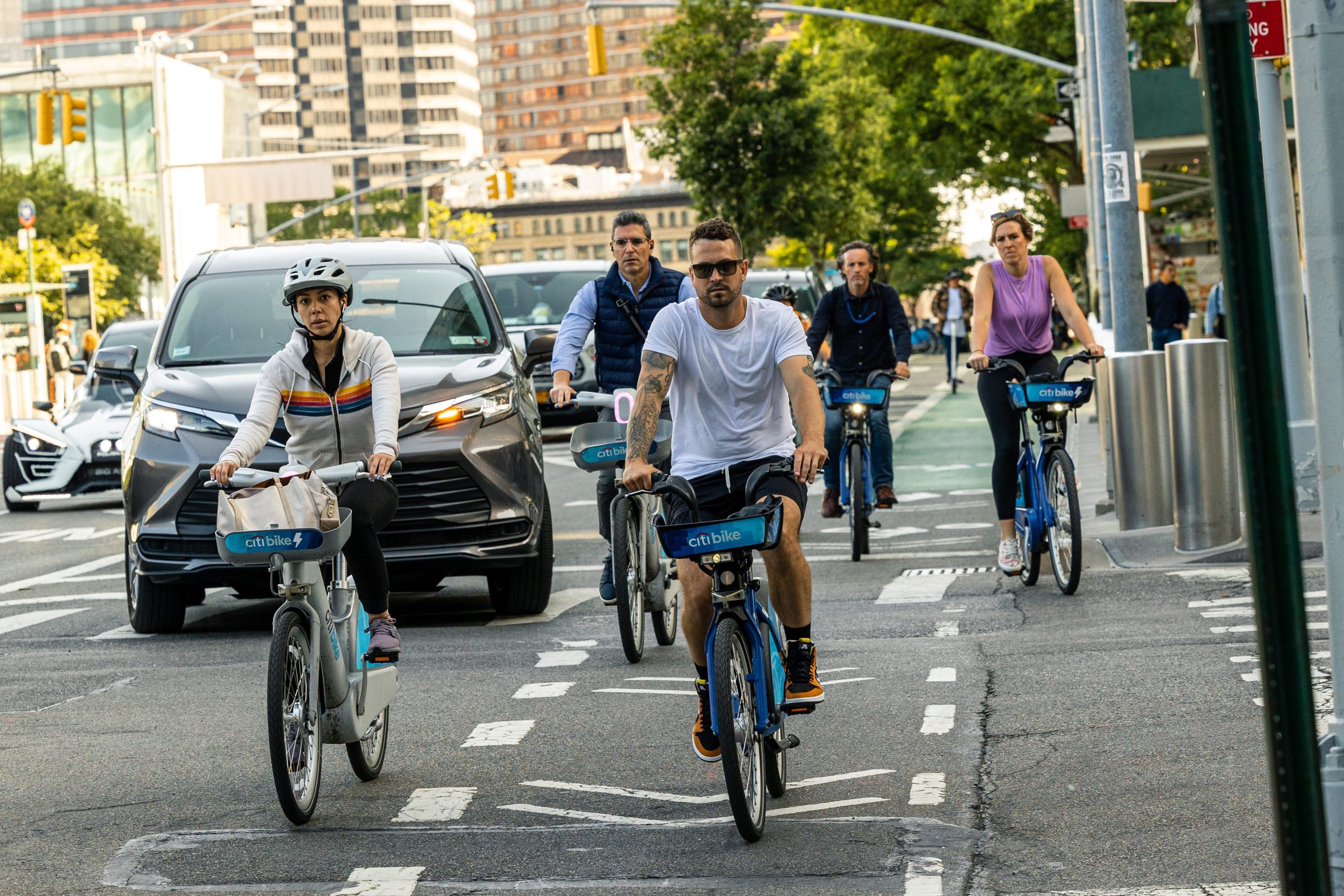This is the second installment in a three-part series on the
reshaping of New York City and its consequences for sustainability and
livable streets. Read the first part here.
Yesterday we looked at the Department of City Planning's eight-year record on rezoning and its general success at creating opportunities for development near transit. Density, however, is only one piece of the planning process. Amanda Burden's planning department has laid the foundation for transit-oriented growth, but so far failed to create conditions where walkable development can flourish.
"Everyone's trying to remake themselves into New York while New York is trying to make itself a more suburban environment."
Across the city, mandatory parking minimums are holding New York back from true transit-oriented development. Additionally, the largest development projects in the city tend to sacrifice good planning in order to satisfy demands from developers with little interest in creating walkable places. Even as the Department of City Planning takes steps toward good urbanist principles in its rezonings, planners are sabotaging that very effort.
The department's parking policy is one major impediment. By requiring most new residential developments to include a minimum number of parking spaces per unit, the department is artificially inflating the supply of parking, inducing more traffic and subsidizing car ownership.
New research from Simon McDonnell, Josiah Madar and Vicki Been at NYU's Furman Center for Real Estate and Urban Policy [PDF] shows how these policies actually concentrate parking in transit-rich areas.
 Required parking per thousand square feet of land. Parking minimums actually consume the most space along transit lines.
Required parking per thousand square feet of land. Parking minimums actually consume the most space along transit lines.
The research reveals that although buildings near rail stations have lower parking minimums than those in more car-dependent areas, on average residential development within half a mile of rail is still required to have 46 parking spaces for every 100 housing units. Perversely, because you can build more densely near transit, parking minimums per square foot of land are actually higher where transit options are most robust. So even as the planning department tries to concentrate growth near transit lines,
it is simultaneously filling that valuable real estate with unnecessary
parking.
The impact of inserting so
much new parking into the built environment is
enormous.
New York City's parking minimums will add a
billion more vehicle miles traveled per year by 2030, according to Transportation Alternatives' 2008 report, Suburbanizing the City. Parking minimums can also force new development to disengage from the street, creating unpleasant sidewalks and dead spaces for pedestrians, as seen on Brooklyn's Fourth Avenue.
"Everyone's trying to remake themselves into New York while New York is trying to make itself a more suburban environment," said Rachel
Weinberger, the lead author of the TA report and a professor of urban planning at UPenn. Weinberger argues that the combination of
increased density and parking minimums means that the planning department is
"pushing the urban form into a more Corbusian, towers-in-the-park
shape." A form that has been discredited for the better part of 50 years.
Shortsighted parking policy has been complemented by outsized redevelopment
projects widely seen as antithetical to sustainable planning. "The big way
that Bloomberg projects have been anything but transit-oriented is not
the rezonings, but those rezonings that have been combined with major
redevelopment initiatives," said Joan Byron, the
Director of the Sustainability and Environmental Justice Initiative at
the Pratt Center for Community Development. "These are the megaprojects: Yankee Stadium,
Willets Point, or Coney Island, to name a few examples."
In these
cases, Byron says, the planning department -- especially when working closely with
the NYC Economic Development Corporation -- ignores good planning and
instead "seeks to maximize the return on investment for a hypothetical
developer." The upshot is that these megaprojects routinely sacrifice walkable streets in order to embrace the automobile, as Ron Shiffman, a co-founder of the Pratt Center and former planning
commissioner, described for Streetsblog last November.
In some places, the planning department's transit-oriented rezonings
and its auto-centric redevelopments sit cheek-by-jowl. The 1,248 parking space East River Plaza, for example, hulks next to the FDR Drive in East Harlem, while just a few blocks closer to the Lexington Avenue subway, huge swaths of the neighborhood were upzoned to take advantage of the area's transit resources.
 The Department of City Planning's vision for Hudson Yards.
The Department of City Planning's vision for Hudson Yards. At Hudson Yards, perhaps the marquee development project of the Bloomberg
Administration, the picture is even more muddled. On the one hand, the city has invested $2.1 billion of its own money
to extend the 7 line to the far west side of Manhattan, a serious investment in
making these new apartments and offices transit accessible. On the
other hand, it took a lawsuit
from the Hell's Kitchen Neighborhood Association to force the
administration to abandon its plan for 17,500 new parking spaces at Hudson Yards.
While the Bloomberg administration
invests billions of city dollars in making Hudson Yards a "dynamic, transit-oriented urban center,"
it has also actively fought to make it a car-friendly location.
These goals are fundamentally incompatible. "You can't make a place auto-accessible," said Weinberger, "without
eroding the pedestrian and therefore the transit environment."
Bloomberg and Burden have undertaken a transformative
rezoning of the city, mostly along transit-oriented lines. At the same time,
their policies are not filling those transit-rich areas with development that actually fosters walking and transit use. Planners instead insist on the unnecessary construction of
parking spaces and allow developers to import suburban standards into New York City's urban fabric. It's as if the left hand doesn't know what the right
hand is doing. In the third post of this series, we'll look at how the Bloomberg administration can use the next four years to better align its development policies.





